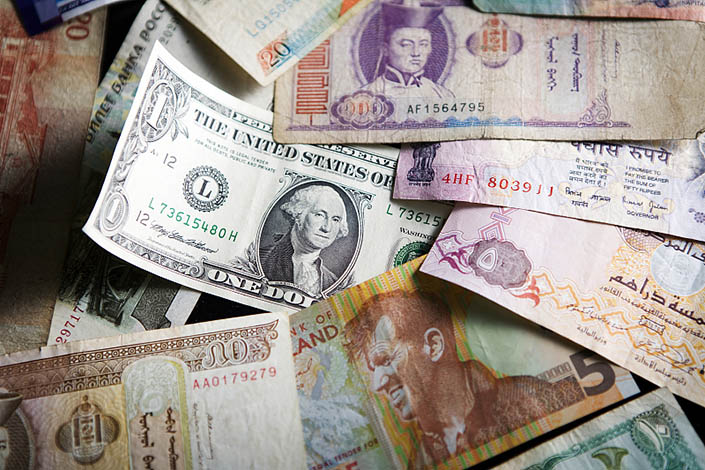Soaring Fuel Costs Add to Pressure on Asian Currencies

(Nikkei Asia) — Currencies across Asia are feeling the pain as investors retreat from the region amid concerns about China’s economic slowdown, soaring commodity prices and signs of global inflation.
Investors have reduced their exposure to the South Korean won, the Thai baht, the Japanese yen and other Asian currencies as the dollar gains strength, backed by expectations that the Federal Reserve is getting ready to raise interest rates as the Covid-19 pandemic wanes, perhaps as soon as next year.
The 10-year U.S. Treasury yield hit its highest point since mid-May last week and some market participants predict it has further to rise this year, especially if the Fed accelerates its monetary tightening in the face of higher inflation.
Such anticipation has caused tremors across Asian currencies, with the yen tumbling around 3% in the last month, at one point hitting its weakest level in nearly four years, at 114.69 yen per dollar.
South Korea’s and Thailand’s currency have been choppy for the last few weeks and remain sharply lower compared with the beginning of the year: The won is down 8%, year-to-date, while the baht has sunk over 10%, putting the two among Asia’s worst performers.
A sooner-than-expected U.S. rate hike amid “mounting global inflationary pressure has been the main concern surrounding Asian currencies,” said Ken Cheung, the chief Asian foreign exchange strategist at Mizuho Bank in Hong Kong.
This has prompted some nations to start moving toward normalizing monetary policy so as to manage inflationary pressures. Singapore’s central bank, in a surprise move, tightened monetary policy this month for the first time in three years, joining others in the region such as South Korea and New Zealand.
Consumer price indexes have spiked in several countries as economic activity picks up. And while some policymakers have tried to soothe investors’ nerves, rising prices for coal, natural gas and crude oil are adding fuel to the fire.
The effect of surging energy prices differs across countries, however. While net exporters of fuel are set for a windfall, importers could suffer from higher prices as consumers’ budgets are squeezed and inflationary pressure increases.
Energy-importing economies like South Korea and Turkey have seen their currencies weaken in response. The won fell to its lowest level in over a year this month, prompting South Korea’s central bank to consider intervention. In Turkey, the lira has plunged around 10% in the last month, touching an all-time low against the dollar. The lira is being further weighed down as President Recep Tayyip Erdogan puts the central bank under his thumb — firing hawkish policymakers and pushing it to slash interest rates. On Thursday, it cut rates by 200 basis points, more than the market was forecasting, even as inflation stays high.
The Indian rupee has experienced some recovery in the last few weeks. But David Rees, a senior emerging markets economist at Schroders, wrote in a report that “although India enters the bout of higher energy inflation in relatively better shape, news that coal reserves have been depleted raises the risk that imports will need to increase, causing the current account to swing into deficit and putting pressure on the rupee.”
Russia, on the other hand, as a net fuel exporter, has emerged a winner in the energy crunch. The ruble is one of the few major global currencies that has gained against the greenback, rising about 3% over the last month.
RBC Capital Markets also points out that Malaysia may be in for a turnaround, saying in a report that the country could benefit from rising oil prices “as one of the handful of net oil exporters in [the] Asia-Pacific,” which could buoy the ringgit.
Another major concern hanging over Asian currencies is China’s growth wobble. The country’s gross domestic product growth slowed to 4.9% in the third quarter, with a cooling property market and power cuts in industrial heartlands among the factors. With a potential default by property developer Evergrande Group looming, some fear knock-on effects for the global economy.
The International Monetary Fund recently trimmed its global economic forecast for 2021, adding “inflation scares” as a risk that could slow the pandemic recovery.
Charlie Lay, a foreign exchange strategist at Commerzbank in Singapore, argues that the won and the baht may have room to rise, going into 2022. “Thailand’s reopening and Korea’s electronics exports are both positive factors that could help their currencies play catch-up.”
Mizuho’s Cheung says countries’ vaccination rates are key data for currency traders to watch. “The vaccination rate is still low in Southeast Asia, so even if there are moves to reopen borders, uncertainty over a resurgence [of COVID] and the growth outlook could keep those currencies low.”
“In general, we believe Asian currencies could remain vulnerable in the foreseeable future,” said Motoki Maruyama, head of forex and rates trading in the Americas for Mitsubishi UFJ Financial Group.
“With the hike in energy prices and post-pandemic recovery of business activities, countries with less favorable current account balances would be at a disadvantage in navigating macroeconomic trends,” he said.
Additional reporting by Jack Stone Truitt in New York
This story was first published in Nikkei Asia.
Download our app to receive breaking news alerts and read the news on the go.
Get our weekly free Must-Read newsletter.

- MOST POPULAR






